| Vintage Pulp | Dec 23 2022 |

Montalbán makes his deepest fantasies come true.
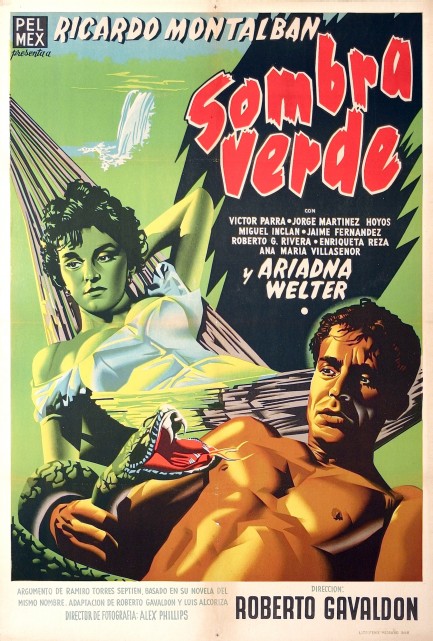
Sombra Verde, aka Untouched, was a romantic adventure made in Mexico, based on a novel by Ramiro Torres Septien, and starring Ricardo Montalbán, who was establishing himself in Hollywood but also returned south for occasional productions. The promo poster is amazing, done in that particularly Mexican mid-century style that echoes art deco. In this example, you can see those elements most clearly in Montalbán's abs, the texture of the dress on the female figure, and the lines of the hammock in which she reclines. We've shared several of these masterful concoctions, and you can see them by starting at this page and following the links.
In Sombra Verde Montalbán plays a scientist dispatched to the state of Veracruz to search for barbasco roots used for pharmaceutical production. He hires a guide named Pedro, and the pair head into the trackless wilderness. Montalbán soon grows distrustful of Pedro, and when they get lost tensions rise. No worries, though—Pedro doesn't last long (though his death scene takes forever) thanks to a poisonous snake. After wandering alone for a period, Montalbán finally stumbles across some inscrutable villagers, including the beautiful Ariadna Welter, who instantly makes his little Mr. Rourke stand at attention. Montalbán is married, but with Welter flouncing about his vows become a secondary concern, and romance ensues. The father in this scenario, however, played by Victor Parra, is bent on keeping his daughter pure, so what you ultimately get is a star-crossed love story in the dripping jungle.
There are some moments that may verge on accidental comedy for modern viewers—Montalbán fruitlessly sucking poison out of Pedro's leg comes to mind, as does the scene where he looks to the sky and sees about thirty buzzards circling, but it all works fine because he's a born star who handles this adventure with ease and confidence. We can't help thinking it's a shame he got few leading opportunities in Hollywood. He surely made more money there than in Mexico, but on the other hand his countrymen knew top level talent when they saw it, and knew what to do with it. Sombra Verde, despite some melodramatic excesses, shows Montalbán's quality. It premiered in Mexico today in 1954.
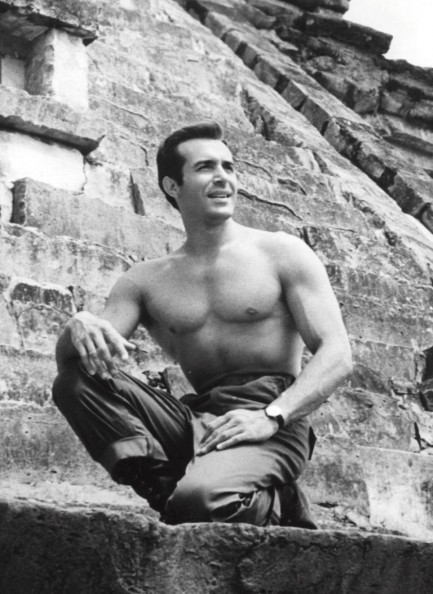
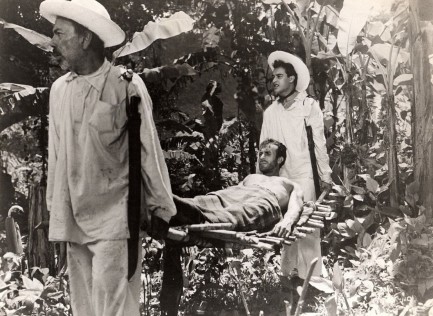
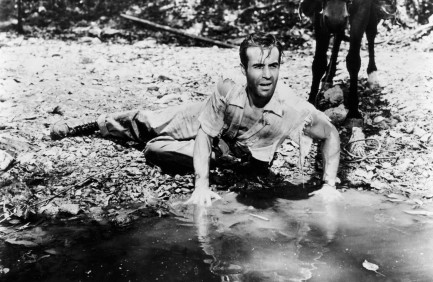
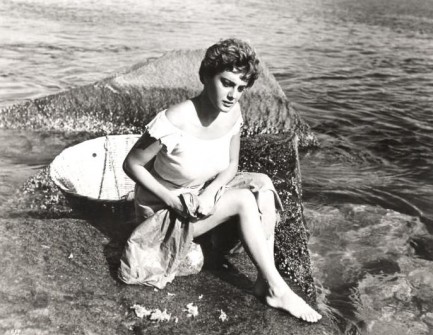
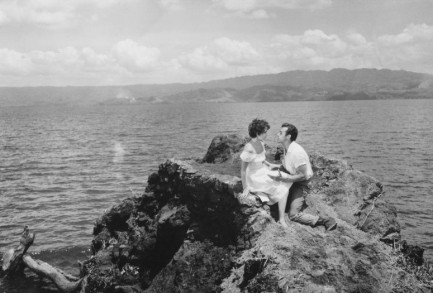
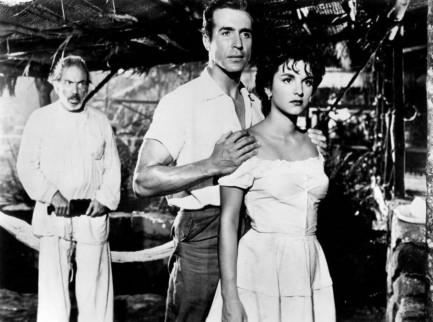
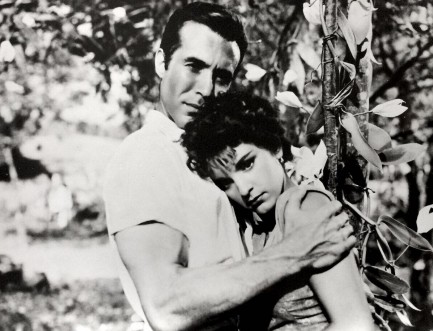
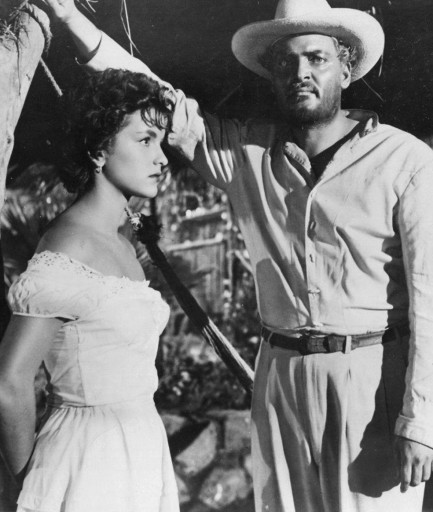
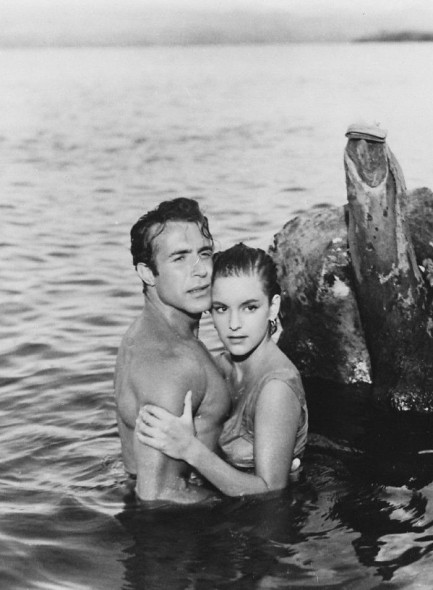
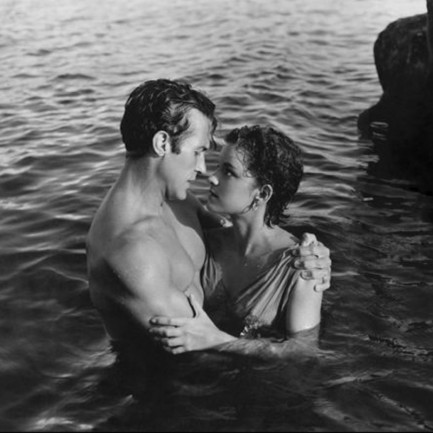
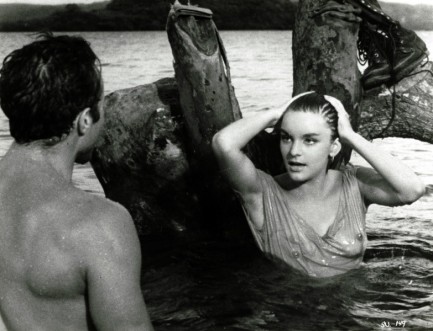













| Vintage Pulp | Apr 24 2022 |

When you cross the line trouble is sure to follow.
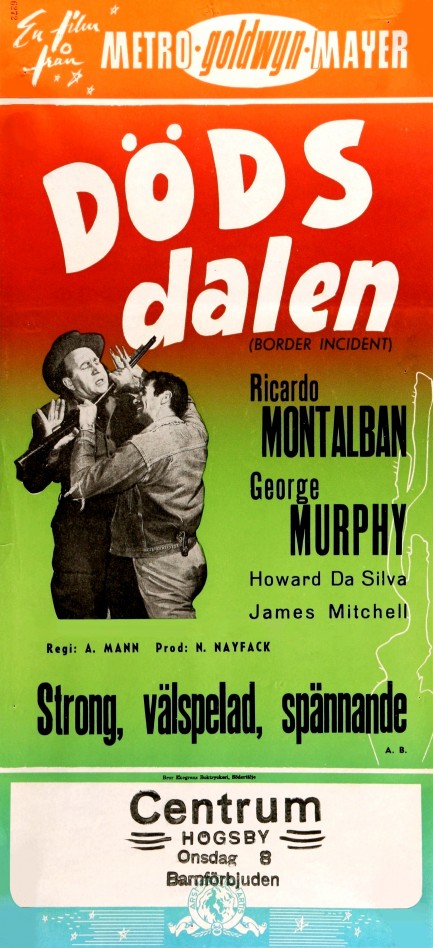
This bright poster for Dödsdalen was made for the Swedish run of the U.S. drama Border Incident, an interesting vintage film about illegal immigration—a hot button issue everywhere these days. Ricardo Montalbán stars as a Mexican investigator named Pablo Rodriquez who goes undercover as a migrant worker and crosses the border illegally to try and get to the bottom of why and by whom migrants are being exploited and sometimes murdered. He gets support from U.S. immigration cop George Murphy, who's equally eager to apprehend the evildoers.
We were curious what sort of treatment migrants would get in the screenplay, and it was generally compassionate. The years we lived in Guatemala we became acquainted with some locals and learned quickly that the vast majority of those who left for the States didn't want to go. Well, we didn't learn it—we already knew it because it's a no-brainer. Leave their families, wives, children, culture, social networks, and all sense of security? Of course they don't want to do it. But for the most part it's go north or go hungry. If that kind of dilemma isn't worthy of a person's compassion, we don't know what is.
Montalbán brings authenticity and passion to his performance. You may remember we thought he should have starred in Touch of Evil instead of Charlton Heston. His character comes under suspicion immediately—his hands are too soft to belong to a migrant. Murphy, working undercover from the other end, also gets into hot water, but survives a beating and torture to get next to the crooks. They're from the U.S., which of course is plausible. No industry as profitable as human trafficking is controlled from only one side of a border. Americans make money on it and always have. These particular Americans will kill to keep the profits coming in, which means Montalbán and Murphy have their hands full.
Border Incident scores well in mood, tension, and seriousness, and is well photographed in noir style, and in fact qualifies as a film noir, though one that's rarely cited. It was helmed by Anthony Mann—the noir veteran behind T-Men, Railroaded!, and Raw Deal, and his expereience and style help make the movie more than the sum of its production budget. When you add it all up, what you have here is a flick that's worth seeing, not least because Montalbán is a natural star. He's great in this. Border Incident premiered in the U.S. in late 1949 and opened in Sweden as Dödsdalen—"valley of death"—today in 1950.
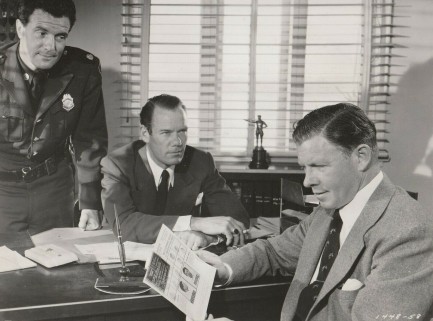
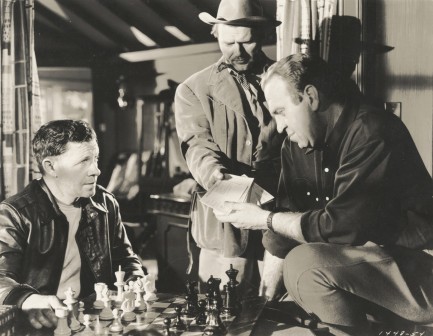
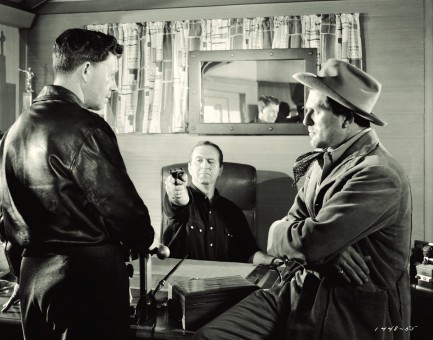
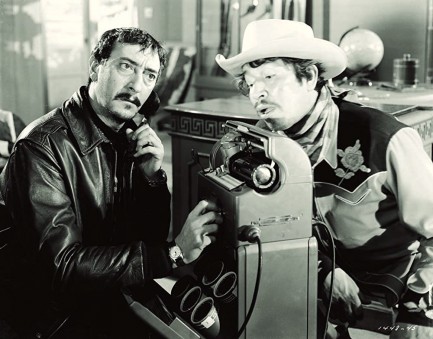
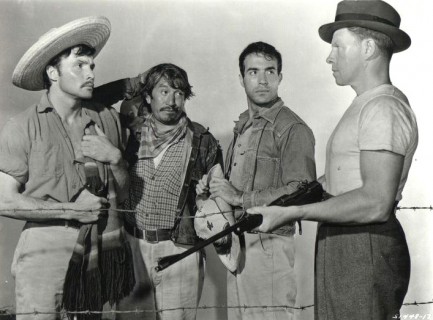
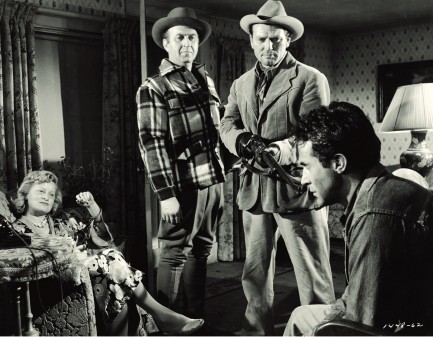
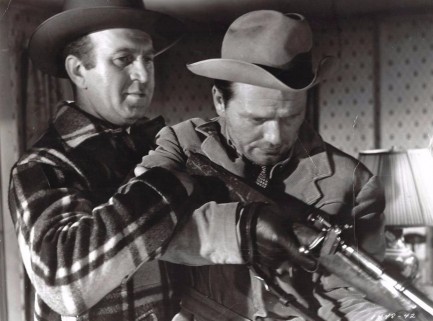
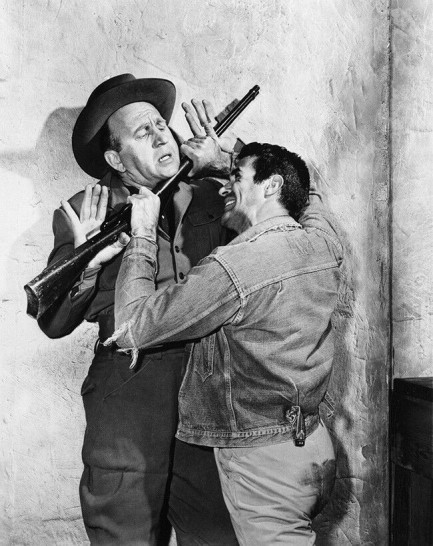
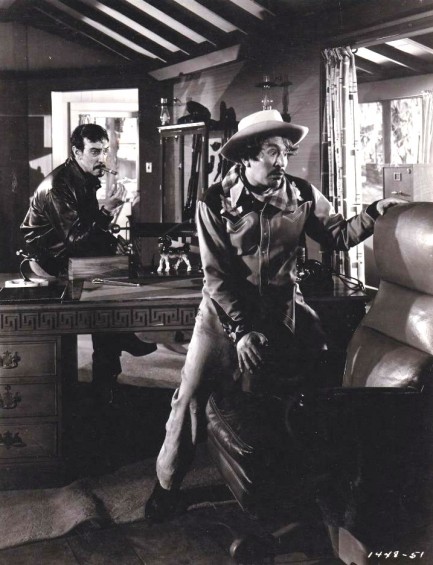
| Vintage Pulp | Oct 14 2009 |

Orson Welles makes a run to the border.
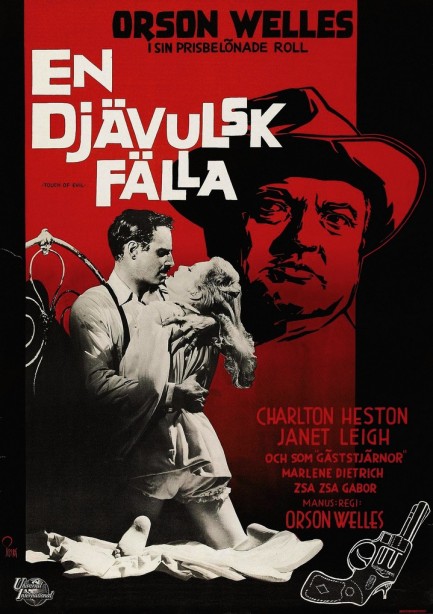
It has the most famous one-take tracking shot in cinema history, it’s the last of the official film noirs (unless you’re one of those Kiss Me Deadly purists), and it was directed by distinguished filmmaker Orson Welles. It was called Touch of Evil, and above you see its moody Swedish laguage poster. Though the film has its flaws, the technical prowess on display is indisputable. At this point film noir was a well-charted phenomenon in which Welles had already dabbled when he made Lady from Shanghai and The Stranger. This time out, he wanted to fully explore the possibilities of shadow the way a painter might explore the possibilities of oils. Everyone knew black-and-white was on the way out. Touch of Evil was Welles’ commentary on the style. He was showing the world what was possible, and by extension, what might be impossible using color.
The casting of Charlton Heston as Ramón Miguel Vargas has been thoroughly discussed pretty much everywhere, and those criticisms are understandable. Certainly, an actor such as, say, Ricardo Montalbán would have shone where Heston merely sufficed, but 1958 audiences would have disliked lily white Janet Leigh being hooked up with an actual Latino actor. People overlook that when they criticize Heston's casting. Welles made a racial statement by swapping the ethnicities of the central couple from Whit Masterson's source novel, in which the cop was white and his wife was Mexican. That's as far as he was willing to go. Cinema mirrors the age in which it was produced. It’s okay to use our modern world as a prism through which to examine the circumstances around an old film, but it’s best do so respectfully, because somewhere in the future people with their own prisms will be looking upon our age, and it won’t look so good to them. Touch of Evil played in Sweden for the first time today in 1958.
The casting of Charlton Heston as Ramón Miguel Vargas has been thoroughly discussed pretty much everywhere, and those criticisms are understandable. Certainly, an actor such as, say, Ricardo Montalbán would have shone where Heston merely sufficed, but 1958 audiences would have disliked lily white Janet Leigh being hooked up with an actual Latino actor. People overlook that when they criticize Heston's casting. Welles made a racial statement by swapping the ethnicities of the central couple from Whit Masterson's source novel, in which the cop was white and his wife was Mexican. That's as far as he was willing to go. Cinema mirrors the age in which it was produced. It’s okay to use our modern world as a prism through which to examine the circumstances around an old film, but it’s best do so respectfully, because somewhere in the future people with their own prisms will be looking upon our age, and it won’t look so good to them. Touch of Evil played in Sweden for the first time today in 1958.




































































